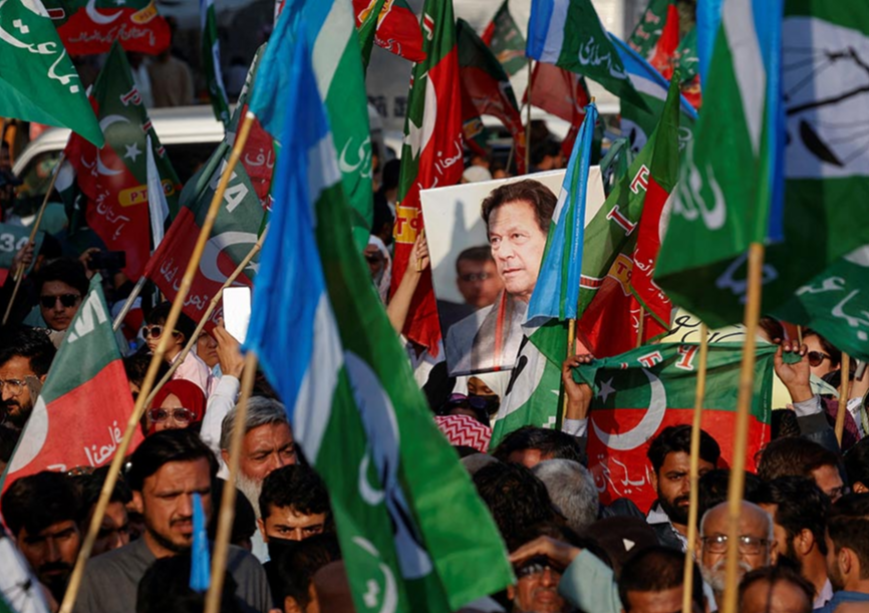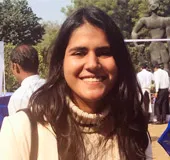
For the past few years, Pakistan has been bogged by multiple self-inflicted crises—political, economic, and security. Since the no-confidence motion against Khan in April 2022, and the resultant instability, there was an expectation across all quarters that holding a general election will stabilise the country. Finally, on 8 February 2024, the Pakistani electorate turned out in large numbers to choose a new government. The results are out and despite expectations otherwise, no single party has received the total majority. The independents backed by Pakistan Tehreek-e-Insaf (PTI) won 93 seats, the Pakistan Muslim League- Nawaz (PML-N) won 75 and the Pakistan People’s Party (PPP) 54 seats of the 265 National Assembly seats. The PML-N has suggested the formation of a ‘participatory coalition.’ Since the results started trickling in, the party has been engaging in talks with the PPP, the Muttahida Qaumi Movement (MQM), etc. to chart out a framework for the way forward and fine-tune the details of the ‘political cooperation’ that they have all agreed to uphold. On the other hand, the PTI has completely ruled out the possibility of getting into an understanding with either the PML-N or the PPP. Its senior leaders have announced that they would rather sit in the opposition than work with the other two major parties. These developments give a sneak peek of what will follow in the days to come. But for Pakistanis, this will only bring a sense of déjà vu —a pattern that they have observed and lived through over the years.
The PTI has completely ruled out the possibility of getting into an understanding with either the PML-N or the PPP.
In defiance
The past few months made the writing on the wall very clear. Nawaz Sharif’s return from exile and the deliberate targeting of Imran Khan and his party—axing the PTI’s election symbol, detaining party workers and putting Khan behind jail—showed who the establishment was supporting to steer its hybrid model forward. But as polling stopped and the preliminary results started pouring in, the independents backed by the PTI emerged at the forefront, raising hope about the will of the people and the citizens’ defiant stance against the military’s invisible manoeuvres. As per a report by the Free & Fair Election Network (FAFEN), of the 127 million total voters, approximately 60 million came out to vote with 45 percent of people in the 18-35 age group. Their decision to come out and vote in large numbers for the PTI-backed independents—despite the latter not having any opportunity to campaign for the vote and with the face of the party lodged in jail—reflected the demographic transition underway in Pakistan and the different ways in which the younger electorate views politics. It also showed how the anti-military sentiment is still persistent on the ground, after surging up in protests last year. The success of the PTI-backed independents, who also performed well in both Khyber Pakhtunkhwa and Punjab highlights the people’s exasperation with the same old political tactics of the two main parties and the manipulations of the military. The influence of Imran Khan’s AI-generated messages from jail and the success of the independent candidates who garnered votes in his name reflect the scale of the stature that his figurehead has now attained in a country desperate for change.
The success of the PTI-backed independents, who also performed well in both Khyber Pakhtunkhwa and Punjab highlights the people’s exasperation with the same old political tactics of the two main parties and the manipulations of the military.
But elections in Pakistan have always raised concerns about the degree to which they were ‘free and fair’ and to what extent the electorate’s votes are respected in the final decision about who will form the government. And even though the caretaker government gave itself a pat on the back for presiding over a successful election, the blockade on mobile and internet services, the severe delay in announcing the results and the allegations of rigging and manipulation from multiple polling stations show how rampant electoral manipulation was. In its preliminary report FAFEN highlighted certain ‘grey areas’ and noted that the electoral process was shoddy on the end of the Returning Officers who were responsible for compiling the results. The United States (US), United Kingdom (UK), European Union (EU), and Australia also released statements calling out the rigging and electoral malpractices. Supporters of the PTI and all other major parties came out on the streets to protest the delay in the declaration of results and the alleged rigging.
Forging a fragile alliance
At the time of writing, six independents backed by the PTI have joined the PML-N with fears about others also jumping ship. Ever since the independents gained the highest percentage of votes, the PTI has been concerned about the possible attempts at poaching. Senior party leaders have reiterated that the independents won because of Imran Khan and thus must abide by the party’s code of conduct. They also warned them of the public and party backlash in case they decide to change ranks. But despite these warnings, the coming days will see more back and forth between the parties and the possibility of more leaders joining the PML-N or the PPP The independents backed by PTI are also not eligible to avail the 70 reserved seats unless they join another party.
Senior party leaders have reiterated that the independents won because of Imran Khan and thus must abide by the party’s code of conduct.
As per the Constitution, the President is expected to convene the National Assembly by 29 February. With PTI raising its crescendo about the forced imposition of a PDM 2.0, the PML-N will most likely cobble an understanding with the other parties and form a new coalition government. How different and effective this setup would be in wheeling the country out of the quagmire that it is in at present will become evident in the weeks ahead. The acrimonious election campaign between the PML-N and PPP, the differences that sprung up during the PDM coalition government, the challenge posed by the PTI in terms of capitalising on its support at the grassroots and bringing governance to a standstill, the power struggle for the highest post, will all influence the extent to which the new government can survive and implement reforms. While the dismal state of the economy will necessitate quick thinking on macroeconomic reforms and the signing of any future agreement with the International Monetary Fund (IMF), the competing economic priorities of the parties and the imperative of keeping the coalition intact will leave very little space for governance to work. This will further benefit the army, which will continue its overarching influence in the political and economic affairs. But even as the coming weeks bring more uncertainty and post-poll matchmaking, with the Election Commission of Pakistan ordering re-polling at certain constituencies, the 2024 elections will always remain a grand testament to the growing fragility of the army in the country’s political affairs and the people’s attempts to demand change.
Shivam Shekhawat is a Junior Fellow with the Strategic Studies Programme at Observer Research Foundation
The views expressed above belong to the author(s). ORF research and analyses now available on Telegram! Click here to access our curated content — blogs, longforms and interviews.




 PREV
PREV


